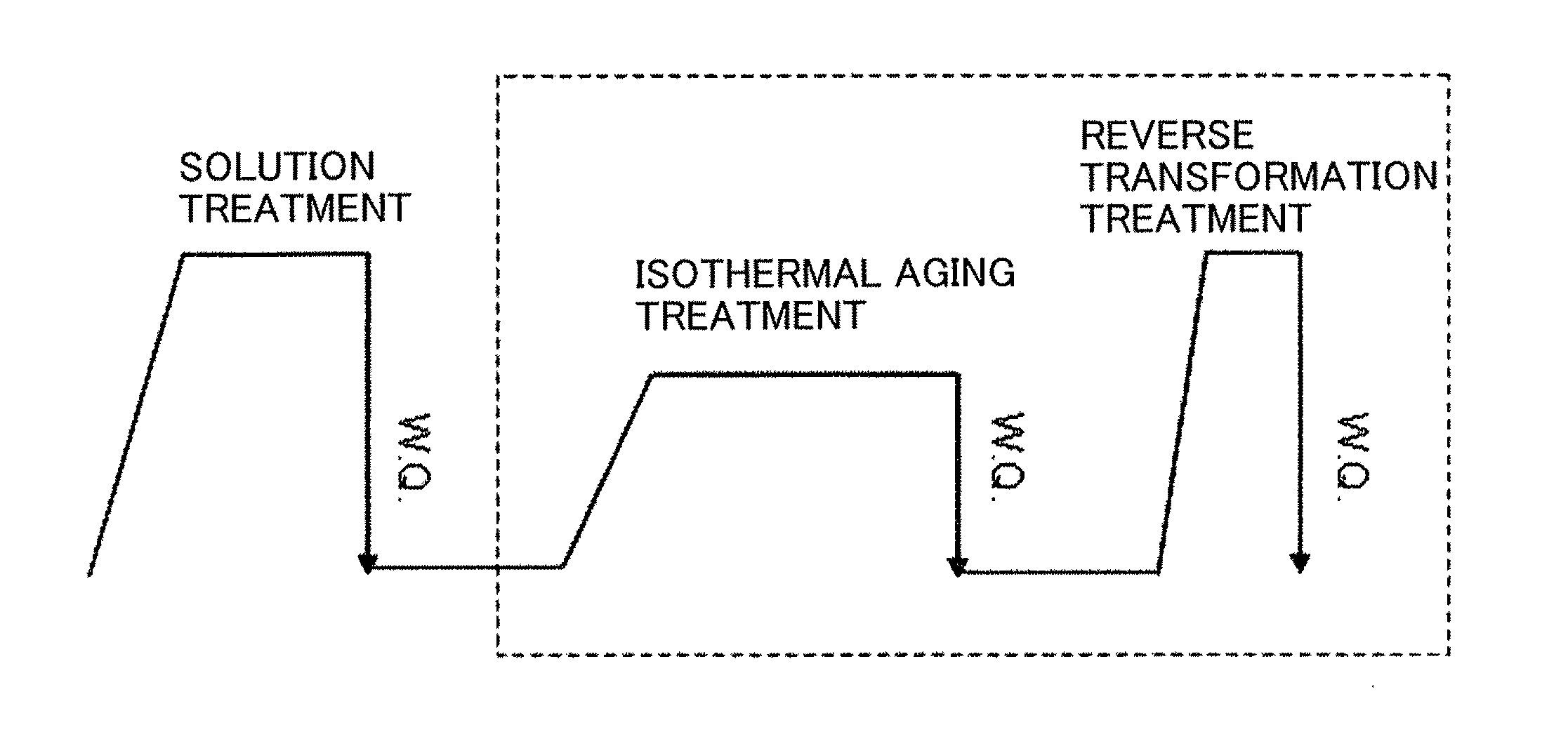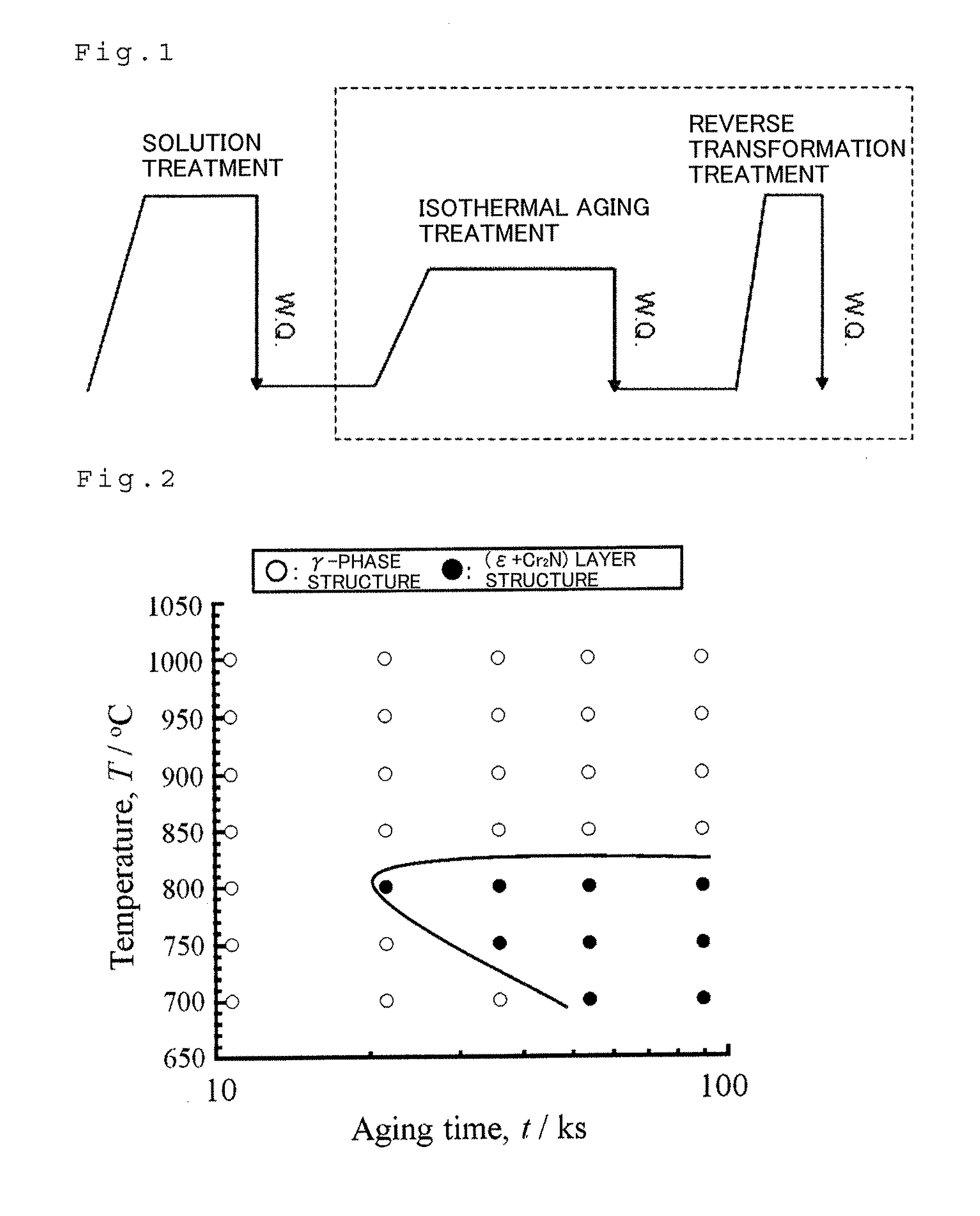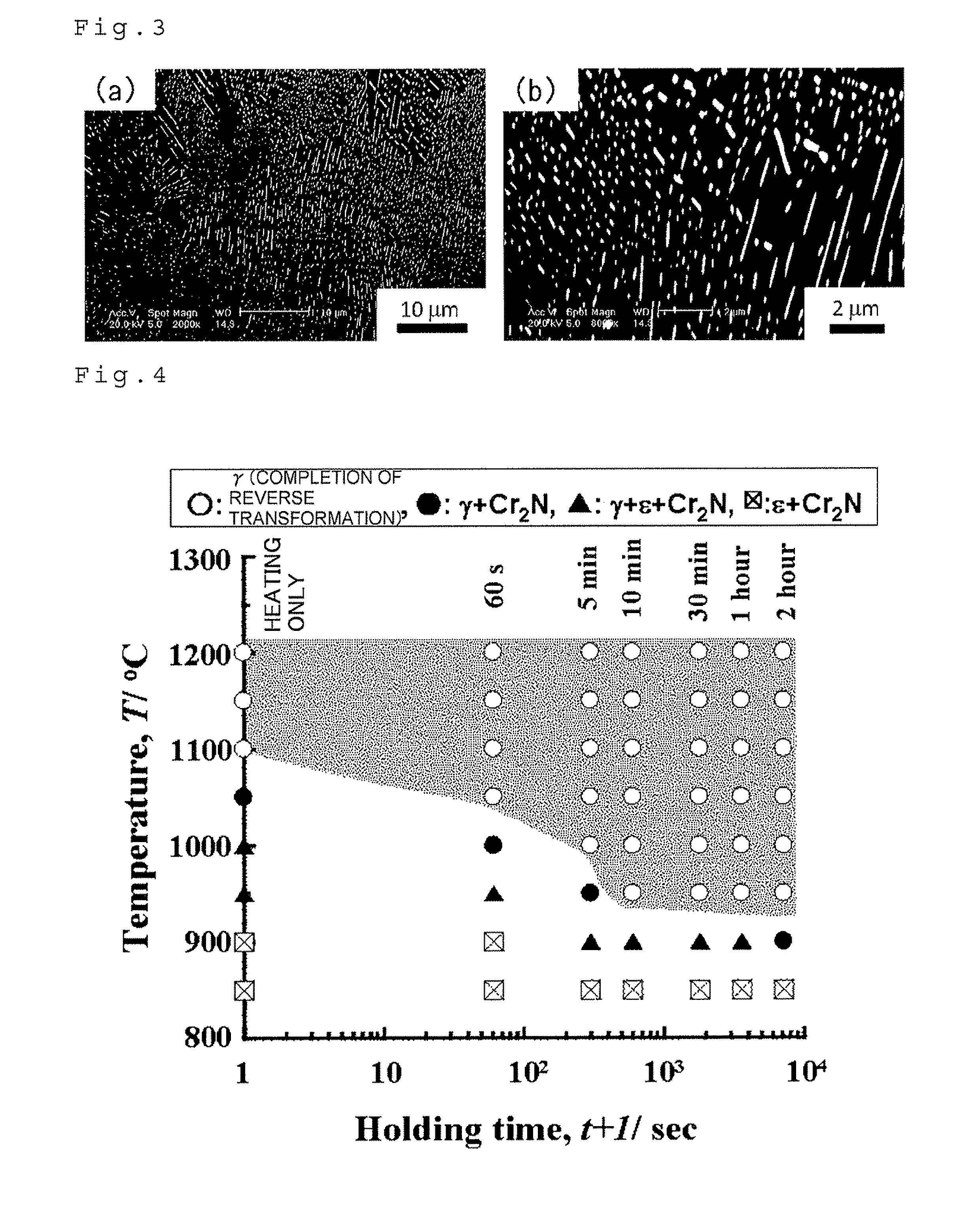Method of forming fine grains of co-cr-mo alloy with nitrogen addition and co-cr-mo alloy with nitrogen addition
- Summary
- Abstract
- Description
- Claims
- Application Information
AI Technical Summary
Benefits of technology
Problems solved by technology
Method used
Image
Examples
example 1
[0040]1. Experimental method
[0041]An ingot of a Co—Cr—Mo alloy with nitrogen addition was formed by high-frequency induction melting so that the sample alloy had a composition, as shown in Table 1, composed of 27.5% by weight of Cr, 5.5% by weight of Mo, 0.12% by weight of Ni, 0.04% by weight of C, 0.16% by weight of N, and 66.68% by weight of Co. The nitrogen was added as Cr2N powder. The material formed by melting was subjected to heat treatment for homogenization, followed by hot forging for destroy the cast structure. The resulting alloy was used as a starting sample to be subjected to each heat treatment.
TABLE 1CoCrMoNiCNBal.27.5 mass 5.5 mass0.12 mass 0.04 mass 0.16 mass %%%%%
[0042]2. Solution Treatment
[0043]The starting sample was subjected to solution treatment at 1200° C. for 3600 seconds and then cooled with water to form a single γ-phase structure. The average crystal grain diameter at this stage was about 200 μm.
[0044]3. Isothermal Aging Treatment
[0045]Then, each sample ...
example 2
[0055]1. Experimental Method
[0056]A Co—Cr—Mo alloy with nitrogen addition having a sample alloy composition composed of 29% by weight of Cr, 6.0% by weight of Mo, 0.02% by weight of C, 0.13% by weight of N, and 64.85% by weight of Co was made into a powder by gas atomizing. This powder was sintered at 1060° C. for 2 hours to obtain a sintered compact having a single γ-phase. The sintered compact subjected to solution treatment was, as a starting sample, subjected to isothermal aging treatment and then reverse transformation treatment as in Example 1.
[0057]2. Experimental Results
[0058]The sintered compact was subjected to isothermal aging treatment and then water quenching to form a multi-phase structure composed of an ε-phase and a Cr nitride. Subsequently, the sintered compact was subjected to reverse transformation treatment and then water quenching. FIGS. 8A and 8B show boundaries of crystal grains (boundary map) of the initial structure and the structure after reverse transforma...
example 3
[0059]1. Experimental Method
[0060]A commercially available metal injection molding (MIM) material having a nominal composition composed of 29% by weight of Cr, 6.0% by weight of Mo, 0.02% by weight of C, 0.30% by weight of N, and 64.68% by weight of Co was, as a starting sample, subjected to isothermal aging treatment and then reverse transformation treatment as in Example 1.
[0061]2. Experimental Results
[0062]The starting sample was subjected to isothermal aging treatment and then water quenching to form a multi-phase structure composed of an ε-phase and a Cr nitride. Subsequently, the sample was subjected to reverse transformation treatment and then water quenching. FIGS. 9A and 9B show boundaries of crystal grains (boundary map) of the initial structure and the structure after reverse transformation treatment, respectively, obtained by an EBSD technique. As shown in FIGS. 9A and 9B, it can be confirmed that the structure subjected to reverse transformation treatment has a structur...
PUM
| Property | Measurement | Unit |
|---|---|---|
| Temperature | aaaaa | aaaaa |
| Temperature | aaaaa | aaaaa |
| Temperature | aaaaa | aaaaa |
Abstract
Description
Claims
Application Information
 Login to View More
Login to View More - R&D
- Intellectual Property
- Life Sciences
- Materials
- Tech Scout
- Unparalleled Data Quality
- Higher Quality Content
- 60% Fewer Hallucinations
Browse by: Latest US Patents, China's latest patents, Technical Efficacy Thesaurus, Application Domain, Technology Topic, Popular Technical Reports.
© 2025 PatSnap. All rights reserved.Legal|Privacy policy|Modern Slavery Act Transparency Statement|Sitemap|About US| Contact US: help@patsnap.com



